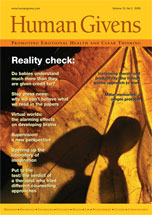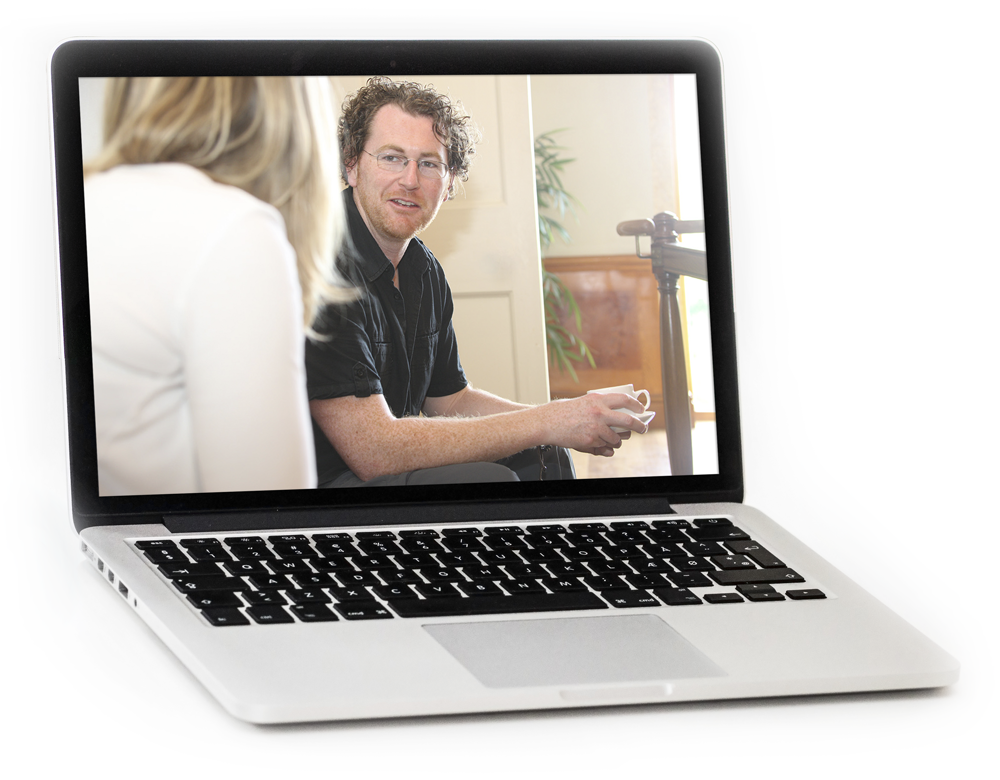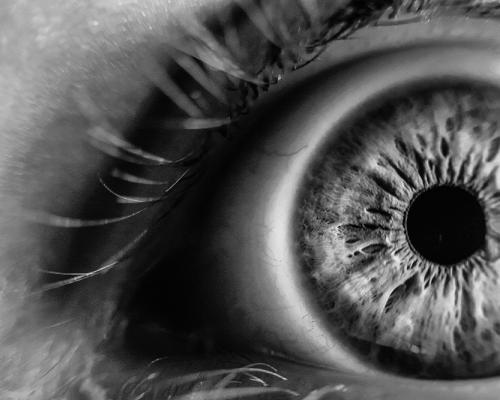A cloud lifted...
Studying to become a counsellor would give her the skills to help people, thought Frances Masters. It didn’t … until she came across the human givens approach.
LIKE many women who take a break from work to bring up children, I chose to do something entirely new when I eventually went back. I decided that I would like to train to become a counsellor. And, again like very many people who go this route, I signed up for a two-year Higher National Certificate in counselling at my local college.
Although such courses are usually proclaimed to be integrative in orientation, they are commonly biased towards the counselling approach favoured and practised by the tutor. My tutor’s orientation was predominantly person-centred, which focuses on providing a holding, nurturing environment, in the safety of which clients supposedly instinctively find their own way out of whatever has brought them into counselling.
I duly earned my certificate and needed to top it up to a Higher National Diploma, which would allow me to call myself a properly trained counsellor. Alas, my local college did not offer that, so I had to find one which did. This time, as I was to discover with growing horror, the tutors were most heavily influenced by psychosynthesis, a branch of therapy developed by Roberto Assagioli, who studied psychoanalysis under Freud and then developed his own approach, which concentrated on the aspects of self that transcend ‘ordinary’ reality.

It was strange enough, on the first day, to join an established group, which had been running for two years. It was even stranger when I discovered that being there was like being in group therapy. There was high emotional arousal in the group and, indeed, an argument erupted about upsets from the previous term, which ended up with tears from some and anger outbursts from others. The subject matter of the first session was “the journey of the soul” and, despite the fact that the existence of a soul seemed a huge assumption, was delivered as if it were incontrovertible fact.
Thus started two extremely difficult years. We were taught about the dark night of the soul – the need for a person to reach the depths of despair before they could climb back up. If a client expressed an interest in brief therapy, we were told, this meant that they were saying one of several things: “I’m scared”; “I’m a commitment-phobe”; “I’m a controller (looking for a quick fix)”; “I’m short of cash”; “I’m frightened of rejection”. If a client turned up late for a session and claimed to have been stuck in traffic, this really meant that the person was stuck, hopeless and depressed. I remember writing in my notes at the time that I had had to postpone a therapy appointment (of course, we all had to have our own therapy) because of a raging toothache and that I wasn’t feeling at all stuck or depressed. One tutor told us proudly about how she had humiliated one client “to burst his bubble of grandiosity”. When asked the effect, she was forced to admit that she had never seen him again.
Ice queen and dragon lady
On one occasion, we had a workshop on mothers – facilitated by someone who clearly had issues with her own. She told us that all mothers fell into one of four categories (ice queen, dragon lady, martyr or sick mother) and we each had to tell the group in which category our own mothers belonged. Fortunately, quite a few of us said the categories weren’t applicable and, while we weren’t challenged as such, clearly our responses didn’t endear us to the tutors, at whose mercy we were if we wanted to gain our diplomas. I was determined to gain mine, so I became quieter and quieter within the group. Earlier, I had challenged ideas – such as the ‘fact’ that envy is caused by the Oedipal complex – and was duly told that I was trying to control the group because of my ‘stuff’.
What saved me was that, halfway through the course, we had input from a visiting tutor who had become interested in the human givens approach. She talked about how to calm down highly aroused people with a technique called 7/11 breathing and told us about emotional needs.
It was an ‘aha!’ moment for me. I started attending various seminars and workshops myself and was excited to learn the causes of depression and how to interrupt the cycle, how to deal with panic attacks and phobias, and how to understand behaviour not in terms of outdated theories but of brain science.
During this time, I had been working in voluntary placements, to accumulate the requisite number of counselling hours before I could become a fully fledged counsellor. I worked at a local category-A prison, a bereavement service, and a youth service. At this time, I was mainly using my person-centred ‘skills’ that I had learned at my first college but I found, of course, that I was just endlessly following my clients around, as they made remarkably little progress. We were limited to eight sessions per client at the prison and 12 at the youth service but the contract was open ended at the bereavement service, and the sessions went on seemingly forever.
Indeed, I had been seeing one woman for a year, during which time, in true person-centred style, I was helping her express her emotions. Then, as Christmas loomed, she told me she felt suicidal. At this point, as I had gradually become more confident of human givens ideas and methods, I decided I had to shift my approach.
Instilling hope

I talked to her about depression as a trance state, causing black-and-white thinking. (I gave her two notebooks, one with a black cover and one a white cover, in which to note down negative and positive thoughts, respectively.) We looked at various aspects of her life, what needs were and weren’t being met, and what was and wasn’t working for her. She talked of wanting to change her job and mentioned for the first time that perhaps she might consider another relationship.
Then I did a guided visualisation with her, building on her resources and her hopes for the future, focusing on what she would like to do next. She left that session no longer suicidal and dreading Christmas but looking forward to the New Year, full of hope and plans. After a year of listening intently and doing nothing but, unwittingly, embedding her depression more deeply, I discovered that she had done all she needed to do to bring about positive change, after just one human givens session — I saw her just once more, and she was like a different person.
The rocking girl
At another agency, I started work with a deeply depressed teenage girl. She sat rocking on her chair, her face hidden by her hoodie. I got her attention by presenting her with the emotional needs audit and getting her to scale her distress. She really responded to the knowledge I gave her about the cycle of depression, the need for sleep and the importance of emotional needs being met in healthy ways. I talked to her of “when you feel better”, “when you’ve moved on”, “maturing out of these feelings” and, by the second session, her entire body language was different. She had hope! We did a beach visualisation, during which a dark cloud in an otherwise blue sky absorbed all her negative feelings and then vanished. At her third and final session, she was almost radiant. She actually said, “I feel as if a big cloud has been lifted from over my head.”
Sceptical supervisors
But I had to be very careful – almost clandestine – about my new approach. If I disclosed what I was doing, I quickly ran into problems. For instance, when I mentioned the black and white notebooks, I was challenged over racism. I told my supervisor at the prison (a dedicated person-centred counsellor) that I had taught a client how to calm himself with 7/11 breathing and was forbidden ever to do so again, as the prisoners shared cells and the sound of deep breathing could be misinterpreted. I was also berated by my college tutor for leaving my prison clients with hope. If they were feeling despair, I was told, they needed to reflect on it until the next session. I was firmly instructed not to ‘lead’ the client, as that was all about my own desire for power and control. So that put paid to guided visualisations, too.
Telling tales
However, there didn’t seem to be a problem with my telling clients stories and, of course, I made good use of the trance states they went into while listening. I told this story to a man who was obsessed with the idea of sexual abuse as a child, which he couldn’t quite recall. “Did you ever hear the story of the monkey catchers of Borneo? When they want to catch a monkey, they place a banana in a narrow-necked bottle in a clearing in the jungle and retreat behind a bush and wait … and, soon, along comes a monkey and he can smell the banana and he can see the banana in the bottle. So the monkey reaches down into the bottle for the banana, makes a fist and grabs it. And then the monkey catcher sees his opportunity! He advances slowly towards the monkey with a blanket. The monkey can see the catcher out of the corner of his eye but he does not want to let go of the banana and so he continues to grip the banana tightly. He won’t let go because he loves bananas. He just won’t let go!

“And then it is all over. The blanket goes over the monkey and he is lost. And you might ask yourself the question, ‘What did the monkey have to do? What could have saved him …?’ And I don’t know when you will see the wisdom in this story … You could wake up tomorrow and notice something different. Or another day or another, and I don’t know when seeing the point will make changes for you. But some people find that, when they notice that change, it just releases more energy and allows them to do more … to just say yes to life.”
After I told this story, I said again, “I wonder what the monkey had to do to survive”. I was, of course, hoping that he would say, “Let go”, but he in fact said, “Give up eating bananas”! Yet the next week he appeared very different. He told me he planned to write a book, provisionally entitled, “Past, present and future” (my italics).
By this time, I was feeling highly constrained by my placements. At one agency, my supervisor was a self-described “Freudian purist”, so I couldn’t possibly discuss my new approach, or get any helpful supervision. I just played the game and talked about counter-transference and my feelings. If I did report, in any of my placements, that my client was much improved after one or two sessions, I was told that all I had done was offer a bit of life coaching, a quick fix that wouldn’t last. Meanwhile, other supervisees would talk of feeling stuck, as they followed their clients’ thought processes endlessly around, and got approval for it.
Going private
I had by now accumulated the hours that I needed to qualify as a counsellor and decided to go into private practice. When I was still in my first year at college, a friend of mine, local GP Kate Smith, had also come across the human givens approach and was extremely taken with it. (Indeed, singlehandedly, she has done an enormous amount to interest local health professionals in it and has even set up training sessions for them.) She told me that, once I had my college counselling diploma and started private practice, she would refer patients to me but only if I used the human givens approach. Originally, that had felt daunting, as I was new to it and more familiar with my person-centred style. But by this time, I would have considered nothing else.
Kate and I started to give lectures locally about anxiety and depression and the human givens approach, to educate the public and interested professionals. As a result, I was quickly inundated with work. One early client was Tom, a young man of 30 with learning disabilities, who had suffered a major stroke, leaving him in what seemed to be a vegetative state. A physiotherapist told Tom’s mother bluntly, in front of him, “He can’t understand anything. There is absolutely no hope of recovery.” Tom’s mum was, understandably, deeply upset. She hoped that, perhaps, I could ‘unlock’ something in him.
Frozen in time
At the nursing home, when I arrived, Tom was asleep. I woke him gently and started to speak to him. It seemed to me that he was listening, as he was watching me intently. Intuitively, I felt that he understood what I was saying, although the staff insisted that he didn’t. I had asked Tom’s mum about his likes and interests, and she had told me that Tom loved Miss Marple murder mysteries. So I had prepared a story, which I proceeded to tell him. It was about a time when Miss Marple was called to a village that had become frozen in time. Every single person in it was frozen in position. They couldn’t speak and they looked confused and depressed. Miss Marple realised that a spell had been cast on them. So she set out to find who had cast the spell and her investigations finally took her deep into a wood, where lived the wizard who had done the deed. Using her skills, she managed to persuade him to let the sun back into the village, so that the frozen limbs could loosen and warm in the sunshine, and the river could flow freely again (Tom had a catheter). At the end of the story, people had begun to laugh and sing and to enjoy eating their food once more (Tom was being tube-fed). They were then quickly able to get on with their lives.
Dream catcher
I had brought with me a ‘dream catcher’, a Native American symbolic web decorated with feathers, and told Tom that I had been given it to give to him by a friend of mine, who had suffered a stroke just like his. This friend had looked at the dream catcher every day and made a wish that, each night, some part of her would be healing. Every day she was curious to find out where healing had begun. On one day, she noticed her voice was stronger, on another that she was able to move the leg that she had not been able to move before, and so on. In a relatively short time, she had regained her abilities, and she now wanted someone else to have the chance to benefit from the dream catcher. I hung it in the window directly in his line of view, so that he could see it catch the light. I told him that it was good to know that our bodies can just repair themselves without our having to do anything; that the body knows how to do it, all by itself, just as a cut finger heals without conscious help.
I had acquired a digital dictation machine by this time and used it to provide recordings for people to listen to in their own time. So I had made for Tom a recording on an MP3 player, containing more positive suggestions, and left it with him. As I said goodbye, he gave me an indescribable smile. I felt a catch in my throat and thought, “Oh, wouldn’t it be wonderful…”
There was no immediate change. A few days later, Tom’s mum had to go away for a while. She didn’t tell Tom as, for all her hopes, she didn’t think he would realise that she was gone. But, when other family members were visiting, Tom suddenly said, “Did Mum go?” That was the wonderful moment when everyone realised that Tom did, indeed, understand and might even start to recover. His speech continued to come back and, armed with that evidence, his parents started fighting hard for physiotherapy and speech therapy for him. Tom has continued to make slow but sure progress. He is now in another nursing home where he receives rehabilitative help. He can talk and respond, use his left hand again and eat normally. Both his feeding tube and catheter have been removed.
Seeing what Tom was able to make happen for himself really brought home to me the importance of generating hope and belief. What good, I can only wonder, could I possibly have done for him, if I had been restricted to person-centred or purist Freudian ideas?
Recurring nightmares
I find that males really like the human givens approach because they respond to the practical and neuroscience aspects of it.
One man I was able to help was Lewis. He was 30 years old, had had a psychotic breakdown three years earlier and came to see me because of recurring nightmares that terrified him. I learned that he had had a difficult relationship with his father from a young age. His mother had eventually thrown his father out but he managed to break into the empty house one day and Lewis found him there when he got home. He completely flipped, as he had thought that he was safe at last. In the nightmares, he was always in a house, being faced by a menacing figure, clearly representing his father.
I knew that I needed to use the rewind de-traumatisation technique, to deal with his experiences, but not in that first session. Instead, I suggested that he could take control of his dream. “After all, if he appears in the house, you know it must be a dream because you have a burglar alarm now and your mother would certainly not let him in. So test it. It is your dream, and you can choose to change him into anything you want.” He liked that idea. “I’ll change him into a cat and throw him out of the window!”
At the next session, he told me that that was exactly what happened. He was amazed – and extremely heartened. Instead of staying up all night, terrified of sleeping, he was now able to sleep more deeply and, naturally, felt so much better in every way. It was only at that second session that I learned how severe his symptoms had been. He had very often been completely unable to move and would sit for hours on the settee, trancelike. He had a terror of using the phone and doing many other ordinary things. If I had known all this at the start, I might have felt that this was too big for me to handle. But, because he was already so much better, I had the confidence to carry on, and we did the rewind. Lewis announced at his third session that he felt completely okay and didn’t need any more sessions. This somewhat alarmed me, as I could not believe that he had progressed from such a severe, debilitated state to normality so quickly. But he was adamant.
Two months later, Kate and I were giving one of our public talks on the human givens approach. Someone in the audience expressed scepticism that it could work. Then someone else rose to speak, and I realised, from what she said, that it was Lewis’s aunt. She said that, thanks to human givens counselling, her formerly severely psychotic nephew had 99 per cent of his life back. This was extremely welcome feedback for me. Since then, Lewis has come back to me twice. The first time, it was because he had bumped into his father in a shop and had felt overwhelmed with anger and fear. I gave him the idea of an invisible protective bubble, which he could project around himself and, from safe within it, say, “Go away! I don’t want to talk to you.”
When he came to see me again recently, he reported that he had met his father again unexpectedly and was able to stay calm and firm, using the protective bubble. By this time, Lewis looked like a completely different person, smiling and well dressed. He wanted help, he said, because he wanted to go after a job, for the first time in his life. His concern was that he needed to be able to drive. He had had a bad experience when learning to drive before, so he wanted to deal with that. We did another rewind and I do hope that he will pass his test and get his job.
The evil voice
A young woman I worked with for depression had had a psychotic breakdown six years before, at the age of 15, when she had to be ‘sectioned’ under the Mental Health Act. She had been severely abusing alcohol and drugs since the age of 12 and, although she had given both up at the age of 20, feared she might have damaged her brain. I feared so, too. But we started to see improvements.
After some sessions, she admitted for the first time that she had been hearing an evil voice that said such terrible things that she couldn’t even reveal them. She had become briefly involved with Satanism at the age of 15 and she feared she had unleashed something evil that was haunting her. She would put herself to sleep for hours and hours during the day, as her only way to escape it.
I relaxed her and asked her if she could become aware of the voice, and she said that she could. So I asked her to notice where it was (her head) but speed it up, so that, even though it was saying the same things, it sounded like Mickey Mouse. Then I asked her to slow it down so that, even though it was saying the same things, it sounded like a worn-out record. And then, I asked her to move the voice a bit further away, to her elbow, so that it was quieter, even though it was saying the same things in its worn-out voice. And then we progressed to putting the voice, now tiny, on to the end of her finger and, eventually, to flicking it on the floor, in her imagination, and grinding it in.
Three weeks later, she returned for another session. She had heard the voice only once, when she was in the pub with friends. She had calmly put it on the end of her finger, shot it across the room and then got on with her evening!
Despite such successes, she claimed to be still depressed. I asked her, “Where is the evidence that what you are suffering is depression and not just boredom?” She had missed out on further education, had no job and was living at home. Clearly, what she needed was a life, and she had a light-bulb moment. She is now enrolled to start college.
Flora’s pregnancy
What I so love about this work is being able to help people access their considerable inner resources.
Flora was referred to me by a health visitor. She had had postnatal depression after her first child and had developed such severe panic attacks that, by the time I saw her at her home, she had not left her house for two years. We dealt with the panic attacks immediately and I explained the cycle of depression. She was better very quickly. A while later, she contacted me again. She had decided she wanted another child but was having difficulty getting pregnant and was undergoing tests, with the results of the final one due the next week. In guided visualisation, I got her to smile into different parts of her body, including her fallopian tubes, and imagine them clear. “I really believe that, after your test results, when you realise that there is nothing wrong with you, you will fall pregnant,” I told her. I wrote in my notes, “I think she will be pregnant by next session”. And she was.
Flora decided to see me once a month, to rehearse a problem-free birth. She was pregnant with twins and we did a lot of guided imagery, in which she imagined her body providing all the nutrients needed and both of the twins thriving. Then she was told that one twin appeared to be in the breech position and that she might need a caesarean. She was extremely disappointed by this. So I relaxed her deeply and talked to her about Mother Nature knowing how to make necessary adjustments. Our visualisation work involved her imagining herself on a beautiful beach, breathing away the pain as she watched the ebb and flow of the waves, and noticing how, when she took herself to the beach, the pain could seem so far away. Flora had come to England as a refugee and had seen and suffered many terrible things. I suggested that her proven resilience and strength would be available for her whenever she needed it. Flora gave birth naturally and each twin weighed a very healthy seven pounds.
Now I’m a supervisor
Interestingly for me, things have come full circle – I am a supervisor at a couple of local statutory services. So now I am the person attempting to supervise trainees who work in a different way from mine, as most have come through college counselling courses, just as I did. Mindful of my own experience, I am careful to support people in counselling in their own way but it can be hard to do, particularly when they talk about their ‘process’ and being stuck. I usually respond, “If you are stuck, I can say, if you like, how I would choose to work with that client”. Some are receptive; some are not. I suggested to one counsellor, who had been going round in circles, that she ask her client, “When will you know that you don’t need to see me anymore?” Desperate, she decided to do so and was stunned to find that new avenues of exploration – a focus on a positive future – immediately opened up. Quite quickly, her client moved on.
Others, however, feel that just following the client through their processes is how it is meant to be done. When I asked one counsellor the focus of her work, she shrugged and said she believed that “just talking” helped.
I have to be careful when supervisees make appeals to me, such as, “It takes a long time, doesn’t it?” “It doesn’t have to,” I reply cautiously. All too often the response is “I don’t want a sticking plaster! I need to do depth work.” But I am staying put, in the hope of introducing new ideas as and when I can and gradually making an impact. I have offered training in the human givens approach to local agencies and I am also starting at the coalface, teaching a 15-week level 1 counselling course at my original college, in the room next door to my old tutor. As the course requires that I cover all counselling methods, I routinely introduce human givens ideas.
Of the seven students who have taken the last course, almost all have already decided to pursue the human givens approach, just because it makes so much sense.
All clients’ names have been changed.
Frances Masters is a psychotherapist working in private practice.
This article first appeared in Human Givens Journal Volume 15 - No. 3: 2008
 Spread the word – each issue of the Journal is jam-packed with thought-provoking articles, interviews, case histories, news, research findings, book reviews and more. The journal takes no advertising at all, in order to maintain its editorial independence.
Spread the word – each issue of the Journal is jam-packed with thought-provoking articles, interviews, case histories, news, research findings, book reviews and more. The journal takes no advertising at all, in order to maintain its editorial independence.
To survive, however, it needs new readers and subscribers – if you find the articles, case histories and interviews on this website helpful, and would like to support the human givens approach – please take out a subscription or buy a back issue today.
Latest Tweets:
Tweets by humangivensLatest News:
HG practitioner participates in global congress
HG practitioner Felicity Jaffrey, who lives and works in Egypt, received the extraordinary honour of being invited to speak at Egypt’s hugely prestigious Global Congress on Population, Health and Human Development (PHDC24) in Cairo in October.
SCoPEd - latest update
The six SCoPEd partners have published their latest update on the important work currently underway with regards to the SCoPEd framework implementation, governance and impact assessment.
Date posted: 14/02/2024















